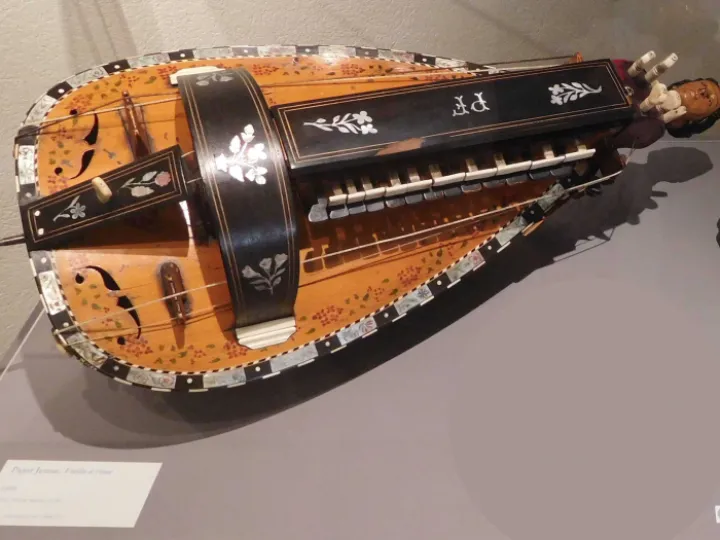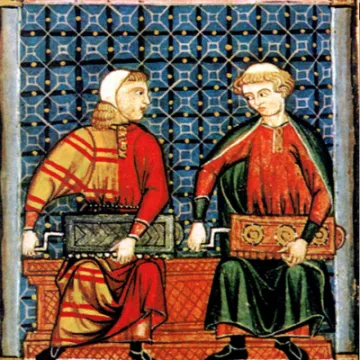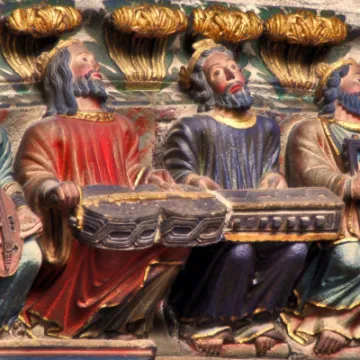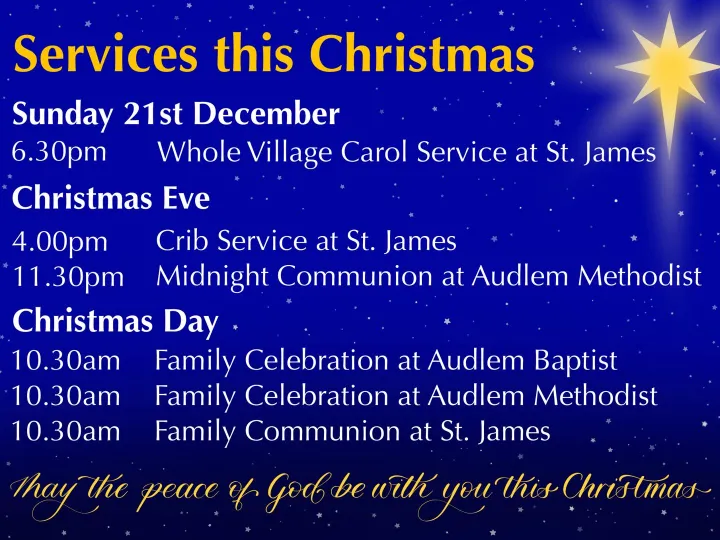History of an Unusual Musical Instrument





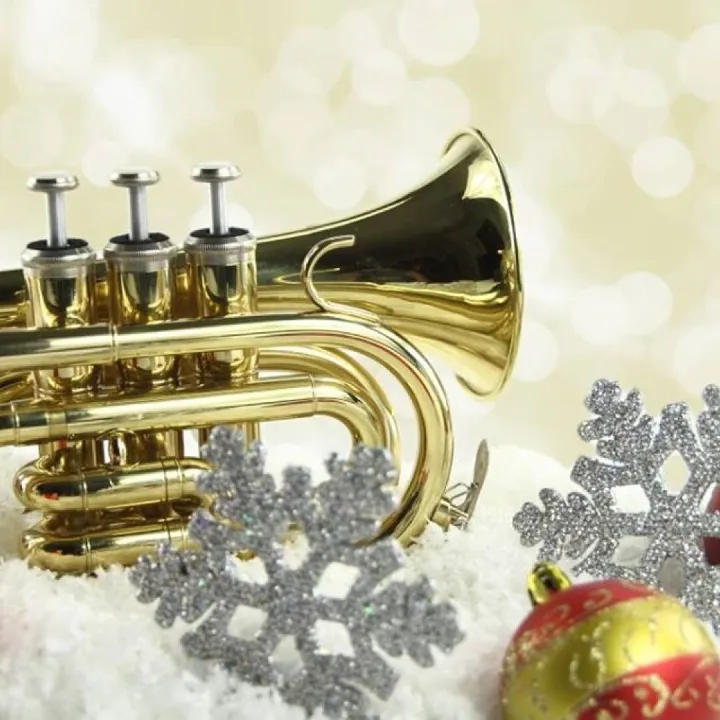


Audlem and District History Society
The history of an unusual musical instrument
Did you know that every November for 23 years the Audlem Bagpipe and Hurdy-Gurdy Day has taken place and players come from far and wide? I thought you might be interested to know a little about the hurdy-gurdy and its history.
Firstly, it is not a barrel-organ but is, in fact, a very ancient instrument with an interesting and chequered history. It has been in continuous use across Europe for a thousand years. In the 13th and 18th centuries it was found in the most cultivated musical circles, but from the 14th to 17th centuries it was played by ordinary folk. Today it is mainly a folk instrument, especially in France where it is called the vielle à roue (wheel fiddle) and is enjoying a revival in many countries.
The hurdy-gurdy is a string instrument with a wheel which acts as a circular bow, turned by means of a handle operated by the right hand. The wheel sets several melody and drone strings vibrating together. The left-hand presses keys on a keyboard which push tangents inside the key box against the strings (just like fingers on the neck of a violin), thus changing the pitch of the melody. It normally has two melody strings and four drones. One of the drone strings is called the trompette. It passes over a movable bridge and produces a buzzing sound by using a special wrist technique when turning the wheel. This is one of the main characteristic sounds of the hurdy-gurdy and gives it the rhythmic impetus. Strapped round the waist, the keys fall back by gravity. The drones give it some similarity to the sound of bagpipes.
The earliest record of a hurdy-gurdy type instrument is a stone carving from 1188 in Santiago de Compostela, Spain. This shows a two-man instrument called an organistrum – one turning the handle and the other operating the keys to change the notes. It was used in churches.
By the 13th century, it had become a one-man instrument, often rectangular-shaped and called a symphonie. It was associated with music performed in the courts of the nobility.
By the 15th/16th centuries, the hurdy-gurdy is becoming the folk instrument we know today, playing the popular dance tunes of the day. Sadly, it also became associated with blind beggars.
Its fortunes changed in the 17th/18th centuries partly due to its popularity at the court of Louis X1V where it became fashionable with the aristocracy. It was refined over this time, both tonally and aesthetically, and assumed its more familiar guitar or lute-back shape. Some very beautiful instruments survive from this time. There is a large repertoire of music from the 18th century including music by Rameau, Lully, Haydn and Mozart.
After the French Revolution, it retreated to the relative obscurity of the countryside but the brilliant style of playing developed in the 18th century has been carried on in an unbroken tradition, especially in parts of central France.
If you have never heard the hurdy-gurdy, why not come along to the Audlem Bagpipe and Hurdy-Gurdy Day at the Shroppie Fly in November (Covid-19 restrictions permitting!).
You could also look on YouTube for music played by virtuosi of the instrument, such as: Andrey Vinogradov; Matthias Loibner; La Belle Vielleuse and – not for the faint-hearted! – electro-acoustic hurdy-gurdy 'wizard' – Guilhejm Desq.
Alix Bryson
Get In Touch
AudlemOnline is powered by our active community.
Please send us your news and views using the button below:
Email: editor@audlem.org

